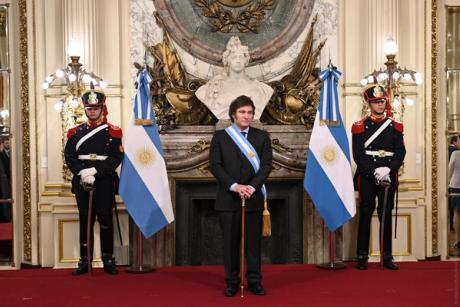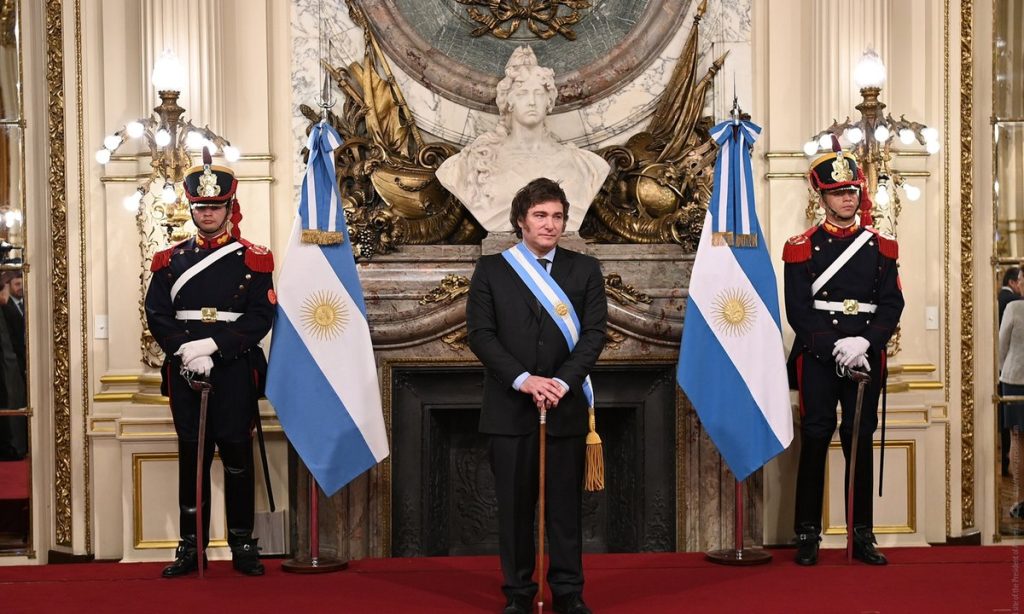
Naomi Klein’s 2007 book Shock Doctrine It opens with an evocative quote from César Aira’s novel birthday: “Any change is a change of theme.” Klein perfectly understood both the cyclical nature of the forced crises of the Global South and the tactical theater used to hide them. Aira also knew all about it: this sharp and analytical statement is under the patina of “absurdism” that he associates with his literary production. What they both expressed was that the lives of Argentines are governed by a certain kind of realism, which has to do with the unmanageable and the uncertain; The main basis of disorganization is realism.
Since President Javier Milei took office on December 10, 2023, changes have accelerated at an inhuman pace, becoming more and more labyrinthine. Public debate in Argentina has focused on assessing the possibility of a terrorist attack due to Milei’s extreme personalization of foreign policies, something previously unthinkable.
Like the shape-shifting parasite in John Carpenter’s movie thing, Argentina’s penchant for trepidation and transience is cruelly intensifying and worsening with each passing day. The topic goes from the privatization of all public companies to the silent death of the last Peronist poet, Alejandro Rubio; from federal anti-protest laws to the drastic collapse of real wages; from the president’s compulsive retweeting habits on X (formerly Twitter) to the suspension of a state-sponsored program that provided free oncology drugs.
Slowly, millions of people are being pushed to the limits, both in practical and economic terms. Civil rights are being eroded as austerity measures hit hard as a collective brainwave.
As with other workers, artists are also affected by these brutal restrictions. The general backdrop is a deep recession and impoverishment of material conditions, including the halting of most infrastructure projects, scientific research, welfare benefits and community kitchens. But since Argentine art is not in a strong and flourishing market, not in substantial state support, but in its own brand of weak public-private partnerships, not enough to keep things going, it tends to think that artists aren’t. suffering more or less than before.
However, in any case, artists are suffering more because they are users of an urban transport system that will suffer monthly fare increases; because they are young mothers who do not know if their children will start classes; because they have to take care of retired relatives whose pensions have suddenly shrunk in value; or because they are tenants who cannot pay the rent for their small apartments (let alone studios). The same uncertainty affects workers at all levels of the economy.
When we think about Argentina’s cultural industries, contemporary art plays the role of a strange and isolated planetoid, with limited influence on the 2.4% contribution of culture to the country’s gross domestic product. But with even the beloved singers and actors of popular daytime TV dramas scrutinized by armies of trolls and pundits because their businesses are subsidized by the state, what is left for contemporary artists? Their work has long acquired symbolic power and political value, precisely from the perception that art should not be a productive form of work.
Argentine artists are not yet ready to let go of the modern dictum of being accountable to anyone, which makes them both infallible in their interpretation of the world and politically privileged. Can artists be mere workers? Or should they defend their supposed exceptionalism in a situation where non-artists are rapidly acquiring the technical means to represent themselves? Is contemporary art really a trench in the cultural battlefield—as it likes to think of itself—or has it become a benign decoration in the war bunker of those who design and execute harmful policies?
If the last edition of the Documenta exhibition proved that contemporary art in the institutional framework can no longer engage in serious political production, perhaps the time has come to ask whether the crisis of contemporary art – in Argentina or elsewhere – is not possible. response to external factors.
- Alejo Ponce de León is a critic and curator. In 2022, he curated the presentation of Argentina at the Venice Biennale, Mónica Heller’s solo project.


